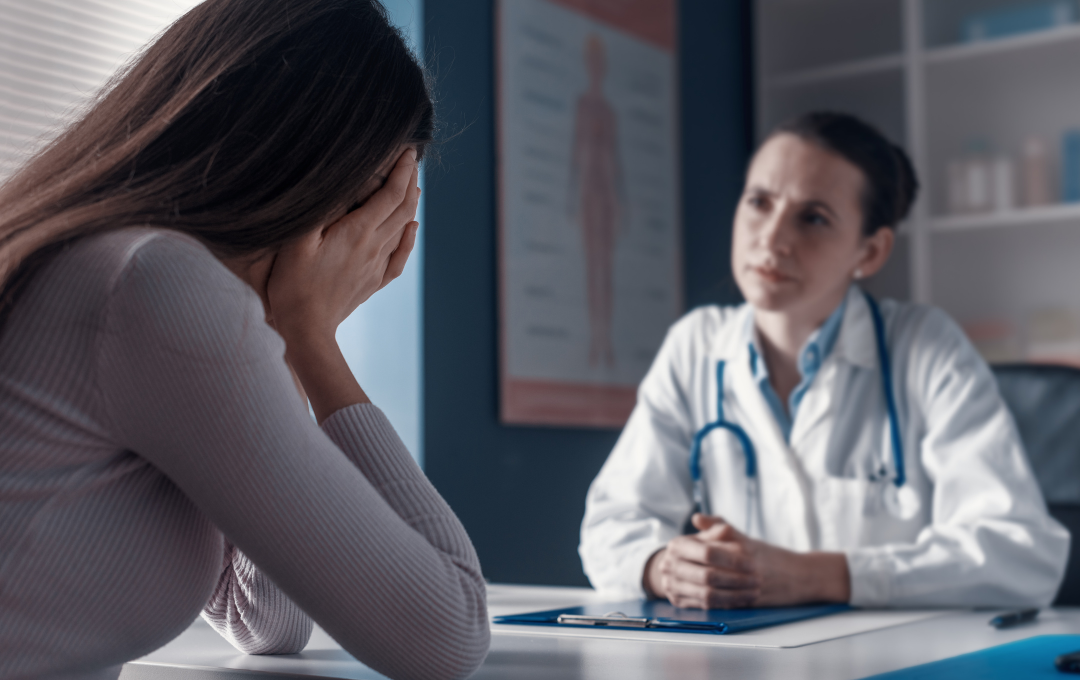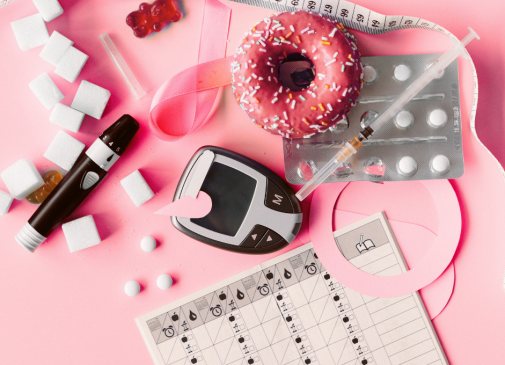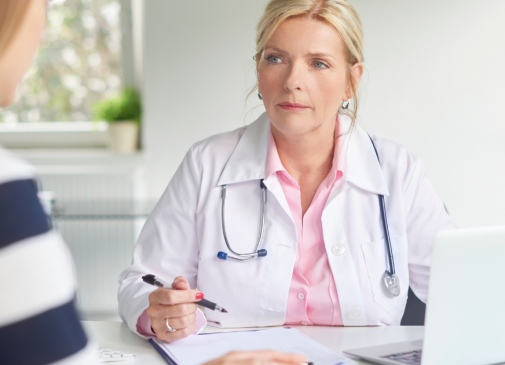
I was 22 when I had my first miscarriage. It was heartbreaking. The doctors said fibroids may have been the cause. To clear my uterus, a D&C was performed, an IUD was inserted, and I was sent on my way to recover—no real follow-up, no further discussion. Just grief.
Fibroids are non-cancerous growths that develop in and around the uterus. They’re fed by blood from the uterine arteries and can range in size from tiny to as large as a melon. Some women don’t even know they have them, but for many, fibroids come with a wide range of symptoms—back pain, constipation, abdominal pressure, frequent urination, painful cramps, and fertility complications.
Up to 80% of women will develop fibroids by the age of 50. It’s incredibly common, yet often minimized. Birth control is usually offered to manage symptoms, but for many of us, the reality is far more complex.
The Symptoms I Could No Longer Ignore
By the time I was 28, my symptoms became impossible to ignore. I had constant bloating, intense pressure on my bladder, bleeding between periods, and a visible bulge in my lower abdomen when I lay down.
I assumed my IUD had expired and that it was time for a new one, so I did what we’re told to do—booked an appointment with the first available OB-GYN. The doctor assured me that everything was normal. He said my IUD was still in place and that I had nothing to worry about. I didn’t question him.
But the discomfort persisted. Over the next year, I found myself trapped in a frustrating cycle of appointments. Despite my symptoms, no one seemed particularly concerned—even after discovering that I had six fibroids and that my uterus had doubled in size.
The Moment Everything Changed
One doctor even made me cry. I still hear her words clearly: “Does this look like the operating room to you?”
The doctor who referred me to her had failed to mention that I needed a procedure because my IUD was lodged between two fibroids and was no longer effective. I came seeking relief, but I left feeling humiliated and helpless.
That was the moment I decided to take my health into my own hands. A simple Google search—“fibroid gyno Miami”—led me to a provider who specialized in fibroids. During my very first visit, he scheduled surgery to remove them.
I couldn’t believe this was an option I hadn’t even known existed. Finally, I had a plan. Finally, someone was listening. I felt peace.
My First Surgery and the Relief That Followed
At 29, I underwent my first robotic-assisted laparoscopic myomectomy in October of 2020. It was the height of the pandemic, so no loved ones were allowed in the hospital. I was alone, facing my first major procedure without support—but I knew relief was on the other side.
The surgery lasted six hours—much longer than expected. My fibroids were described as two grapefruits and four apples. No wonder I had been in so much discomfort. They had even shifted some of my organs; one had been pressing on my bladder.
Living with fibroids had become my normal. I didn’t fully realize how much pain and pressure I had grown used to. Once I started healing, I had this moment where I just broke down in tears—not from pain, but from the overwhelming relief.
My body had been speaking to me for years. I just hadn’t known how to listen.
The Bigger Picture: Women’s Pain Is Too Often Dismissed
It breaks my heart that my story isn’t unique. So many women suffer in silence, taught to dismiss or downplay their pain. We’re conditioned to believe that heavy bleeding, debilitating cramps, and constant fatigue are just part of being a woman.
But these narratives are outdated—and dangerous. When we normalize these experiences, we make room for medical gaslighting, delayed diagnoses, and the deep invalidation of women’s pain. We’re often dismissed, our concerns minimized. The burden falls on us to advocate for ourselves, even when we’re already worn down from the fight.
A New Diagnosis: HLRCC
Unfortunately, my journey didn’t end there. Five years later, now 34, I’ve just undergone my second laparoscopic myomectomy. This time I was in a new state, better equipped to advocate for myself, and more confident navigating the system.
I had eight fibroids—my largest measuring 10 centimeters. After surgery, the pathology report revealed something unexpected. My fibroids carried a rare mutation in the FH gene, which led to a diagnosis of Hereditary Leiomyomatosis and Renal Cell Cancer Syndrome (HLRCC).
HLRCC is a rare, hereditary condition. Only about 500 families worldwide have been diagnosed—but it’s likely underdiagnosed. For women, it means fibroids can appear early and grow aggressively. It also comes with the risk of benign skin tumors and, more seriously, a significantly higher chance of developing an aggressive form of kidney cancer.
Even small kidney masses can metastasize, which makes early detection and regular screening absolutely critical.
A Family Mission for Awareness and Advocacy
This diagnosis didn’t just affect me—it changed everything for my family. We are now all undergoing genetic testing. If others carry the mutation, they too will need proactive care and close monitoring.
Since the diagnosis, I’ve immersed myself in every piece of literature I can find on HLRCC. I’ve joined studies, shared my story, and provided resources to my own providers. It hasn’t been easy. Finding doctors familiar with this condition has been difficult.
But in many ways, my experience with fibroids prepared me for this new chapter. It taught me how to speak up, ask questions, and push for answers. It made me an advocate—not only for myself and other women navigating this system, but now for my family too, as we take steps to understand and manage this diagnosis together.
This is now a family affair. A health journey. A mission.
Why We Must Keep Sharing
What scares me the most is how easy it would’ve been to miss all of this. Had I not kept advocating, pushing, researching—who knows how long it would’ve taken to get here?
There is comfort in knowing I’m not alone. But there’s also a deeper, more painful truth: this is part of a much larger pattern. A pattern that’s costing women their quality of life, their fertility, and sometimes their lives.
This cause is personal to me—and I won’t stop until we’re heard.
If we want to change the way women experience healthcare, we have to keep sharing. We have to keep educating. We have to keep fighting for better.







